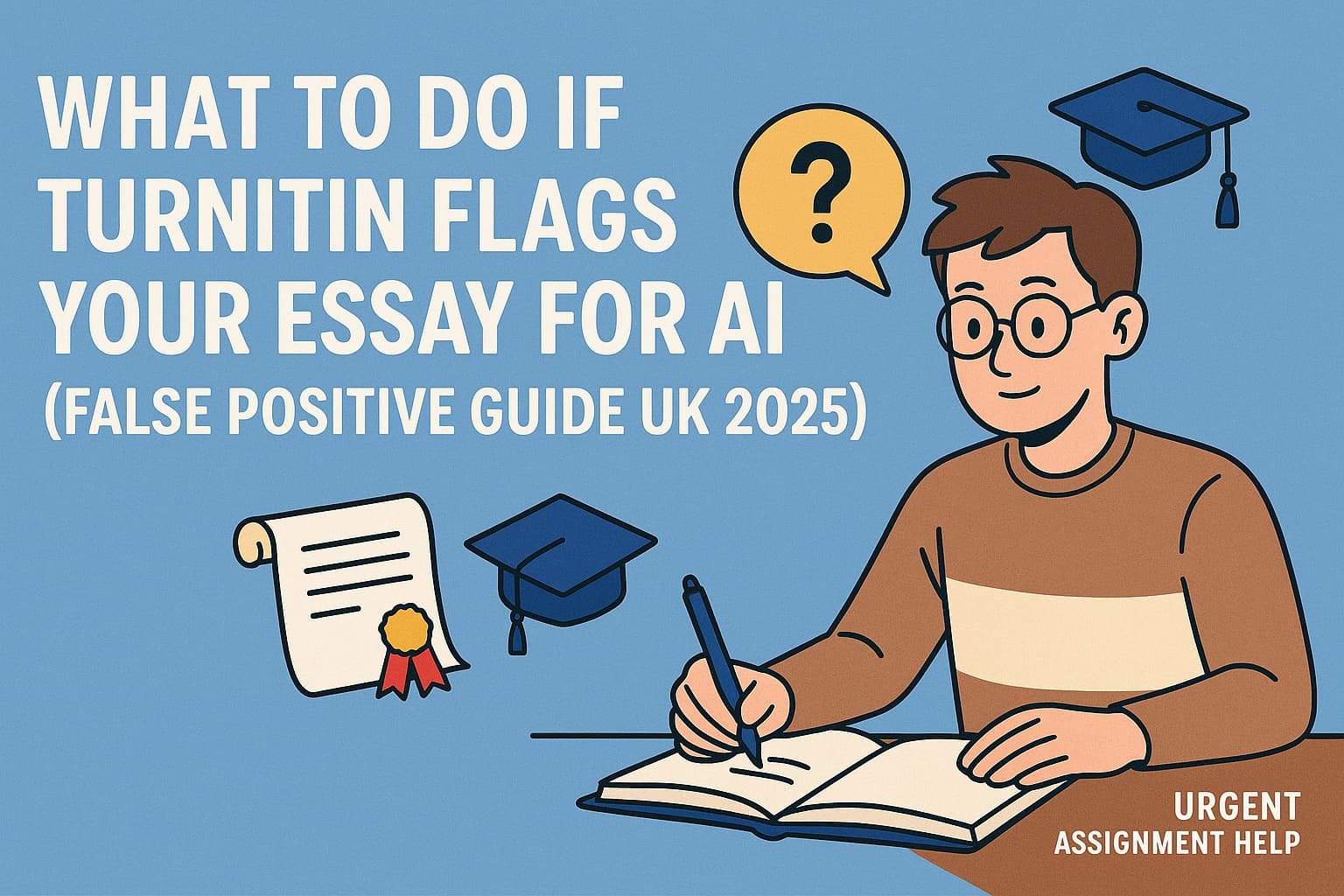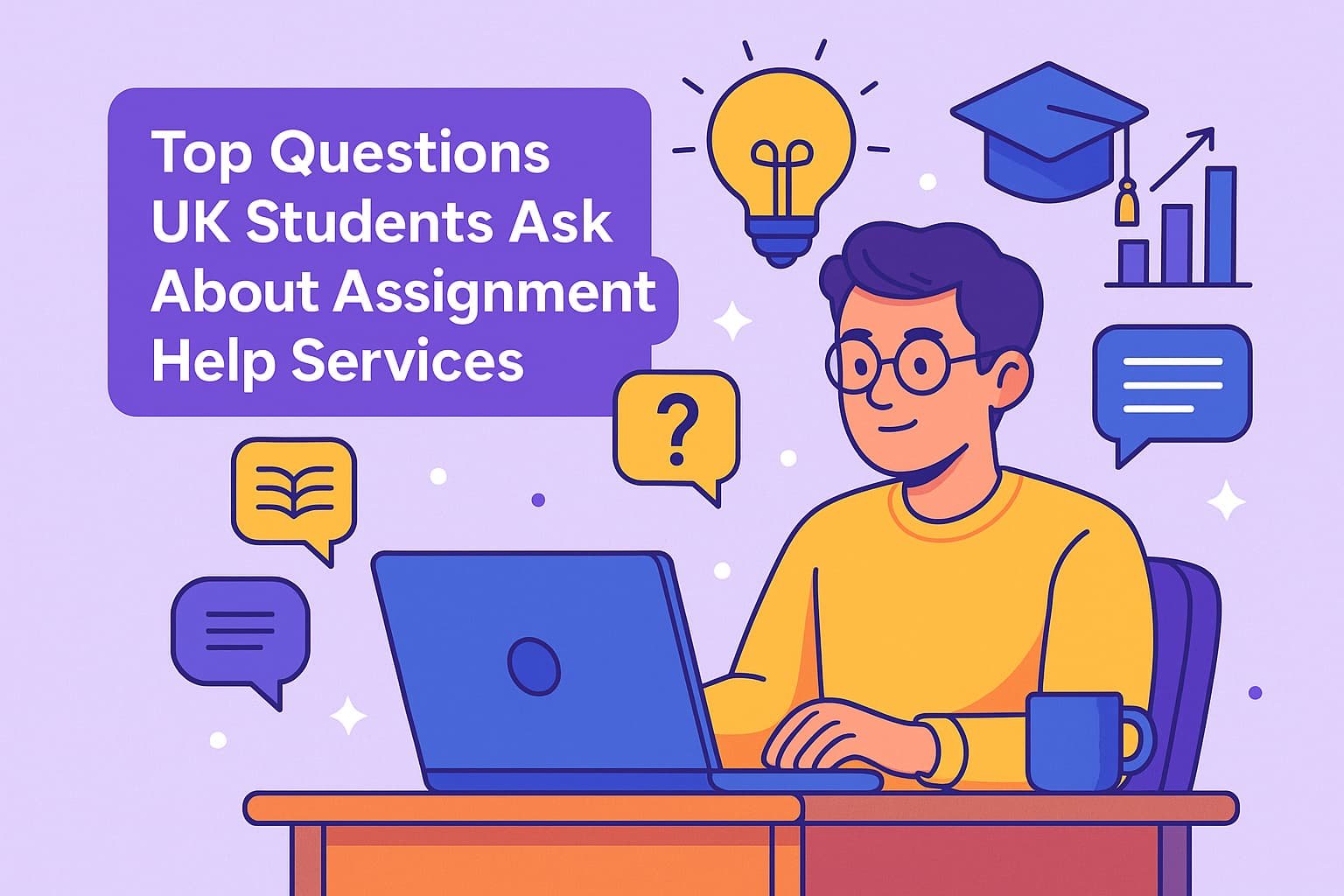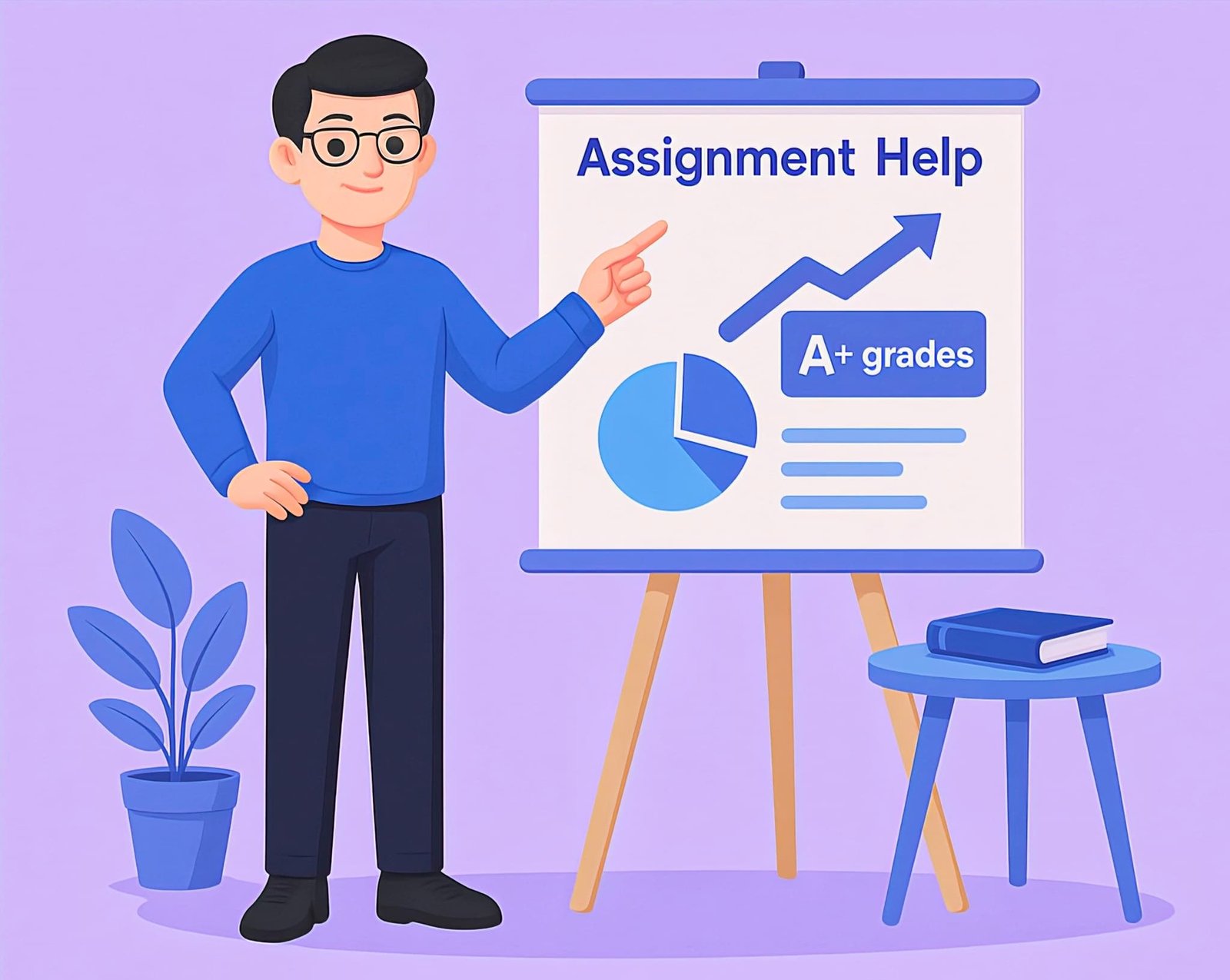What To Do If Turnitin Flags Your Essay for AI (False Positive Guide UK 2025)
Getting an AI flag can feel terrifying—especially when you know you wrote the essay yourself. This guide shows the UK-specific steps to turn a stressful notification into a structured, fair review. You’ll learn what the **new 1–19% asterisk rule** means, which evidence carries weight, how to handle the meeting, and where to escalate if needed. :contentReference[oaicite:1]{index=1}

First 10 Minutes: What To Do Immediately (UK Context)
- Don’t panic: AI % ≠ proof. Turnitin now shows 1–19% as an asterisk with no highlights to reduce false positives. :contentReference[oaicite:2]{index=2}
- Capture evidence: Screenshot the report (including the asterisk, if shown) and save your current files.
- Preserve your trail: Export version history (Google Docs / Word), outlines, notes, and citation logs.
- Email your module lead: Log your response and request a meeting to discuss evidence and method.
- Prepare a 150-word reflection: Summarise your research path, drafting changes, and decisions.
Build Your Evidence: The “Authorship Pack” To Show
Universities examine evidence of authorship, not just a number on a screen. A clear learning trail turns uncertainty into clarity and helps staff apply judgement fairly. Include:
What to Collect
- Version history & drafts: timestamps and meaningful changes.
- Outline & research map: questions, sources, and how they shaped your claim.
- Citation trail: notes with page numbers and quotes you used or rejected.
- 150-word reflection: why sections changed; challenges and how you resolved them.
Why It Works
UK sector guidance emphasises academic judgement and robust, fair processes. An authorship pack demonstrates genuine learning and gives context when indicators are noisy—exactly what providers and the OIA expect. :contentReference[oaicite:3]{index=3}
How Universities Should Judge AI Flags (What Policy Expects)
Across UK guidance (QAA, Jisc, institutional policies), AI indicators are treated as starting points, not verdicts. Staff are encouraged to triangulate evidence, diversify assessment, and give students the chance to explain their method. :contentReference[oaicite:4]{index=4}
- Indicators → Inquiry → Academic judgement: a structured evaluation rather than a single score. :contentReference[oaicite:5]{index=5}
- Fair opportunity to respond: students should be invited to discuss evidence and context. :contentReference[oaicite:6]{index=6}
- Design matters: many providers are adapting assessments to keep authorship visible. :contentReference[oaicite:7]{index=7}
Understanding the Numbers: Accuracy, Asterisks & False Positives
Numbers without context can mislead. Turnitin’s public posts indicate a document-level false positive rate below 1% for documents with higher AI proportions, while sentence-level false positives around ~4% have been acknowledged—hence the sector’s emphasis on human judgement. :contentReference[oaicite:8]{index=8}
In 2025, Turnitin updated the report UI so 1–19% AI appears as an asterisk with no highlights, reducing the risk of over-interpreting marginal signals. This is crucial evidence if your flag sits in that range. :contentReference[oaicite:9]{index=9}
Meeting Script: How to Explain Your Process Confidently
Three-minute walkthrough: 1) Your question & outline → 2) Sources that changed your view → 3) How drafts evolved → 4) What you would improve next time. Bring printouts/screens of version history and notes.
Address Style Shifts
If your prose improved suddenly (e.g., after an editing session), show the before/after drafts and explain what changed. Consistency plus explanation beats speculation every time.
If It Escalates: Second Marker, School Panel, OIA
Ask about second marking or a panel if the concern remains. Keep communications factual, attach your authorship pack, and request written reasons. For unresolved complaints, students in England and Wales can escalate to the **Office of the Independent Adjudicator (OIA)**. :contentReference[oaicite:10]{index=10}
Stay Safe Next Time (Policy-Safe AI Use in 2025)
Many providers permit limited, declared AI use (e.g., brainstorming or clarity) but prohibit undeclared ghostwriting. Always check your module guide and disclose permitted use succinctly. QAA’s resources stress responsible, transparent adoption to maintain standards. :contentReference[oaicite:12]{index=12}
Quick Habits That Help
- Start with a dated outline and research map.
- Write in sprints; save versions often.
- Log citations as you draft (not at the end).
- Add a short reflection before submission.
Disclosure Template
Get a Free Second Opinion (Turnitin/AI + Evidence Check)
Before any appeal, get a calm, independent look. We’ll run a free Turnitin/AI check, review your drafts and notes, and highlight gaps in your authorship pack. You only pay if you choose to proceed with supported editing or structure guidance (ethical, UK-compliant).
Advanced FAQs (Student Language)
Does a Turnitin AI score prove I cheated?
No. It’s a signal for review. Providers must apply academic judgement and allow you to explain your process. :contentReference[oaicite:13]{index=13}
What does 1–19% mean on my report?
In 2025, low values appear as an asterisk with no highlights to reduce false positives—don’t treat this as proof. :contentReference[oaicite:14]{index=14}
How do I prove authorship quickly?
Show version history, dated drafts, notes and a short reflection; then walk through how the work evolved. (This is exactly the context reviewers look for.) :contentReference[oaicite:15]{index=15}
Is any AI use allowed?
Often yes (brainstorming/clarity) if policy permits and you disclose it. Check your module guidance and QAA resources for context. :contentReference[oaicite:16]{index=16}
Where can I escalate if I think the decision is unfair?
Follow the university appeal route; unresolved complaints may go to the OIA (England & Wales). :contentReference[oaicite:17]{index=17}
Conclusion — Let Your Process Speak
AI flags are stressful, but the path forward is clear: preserve evidence, ask for a fair meeting, explain your method calmly, and escalate correctly if needed. With a visible learning trail, you can convert suspicion into proof of your own authorship—and learn powerful habits for future assignments.



I don’t think the title of your article matches the content lol. Just kidding, mainly because I had some doubts after reading the article.